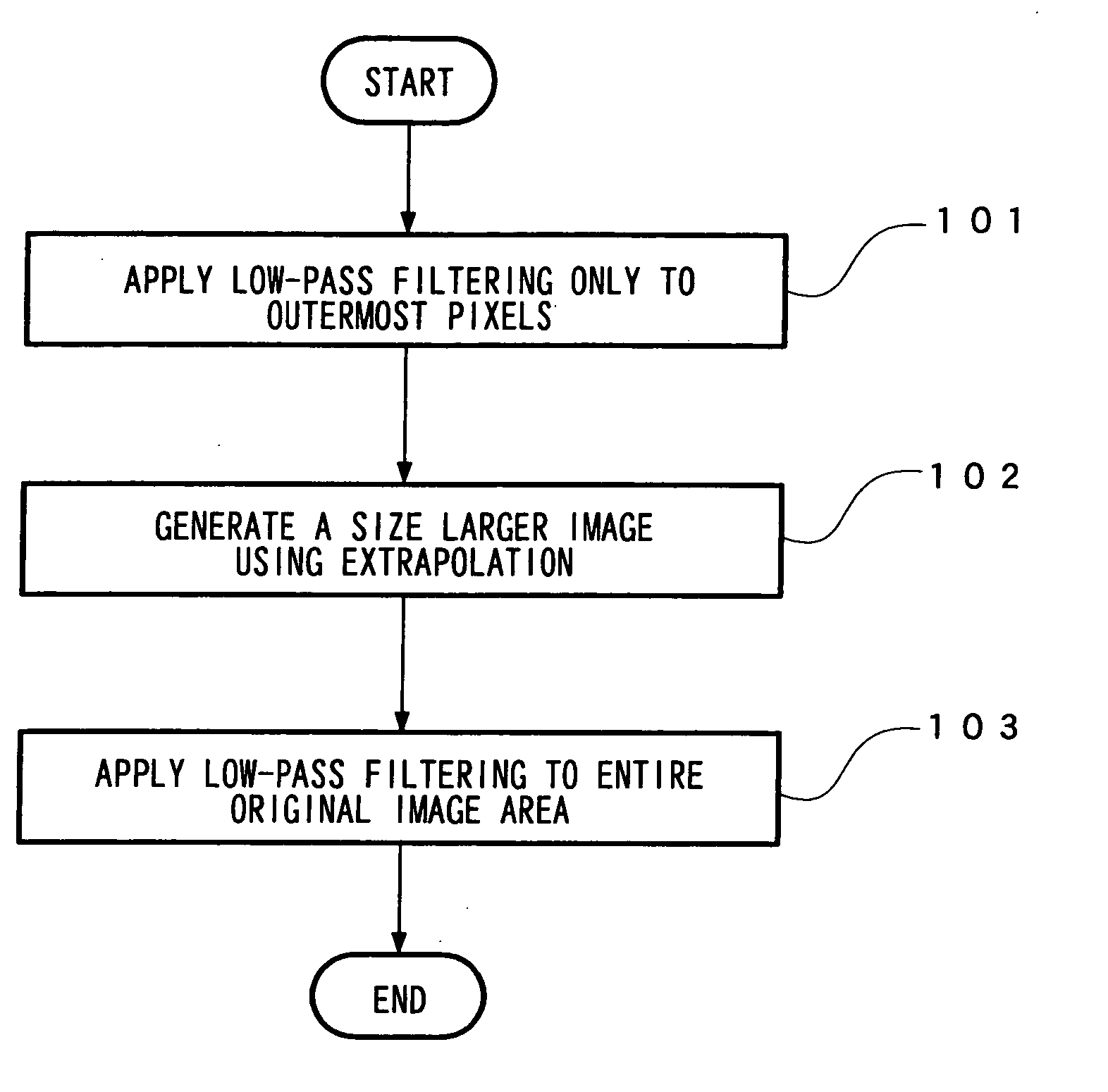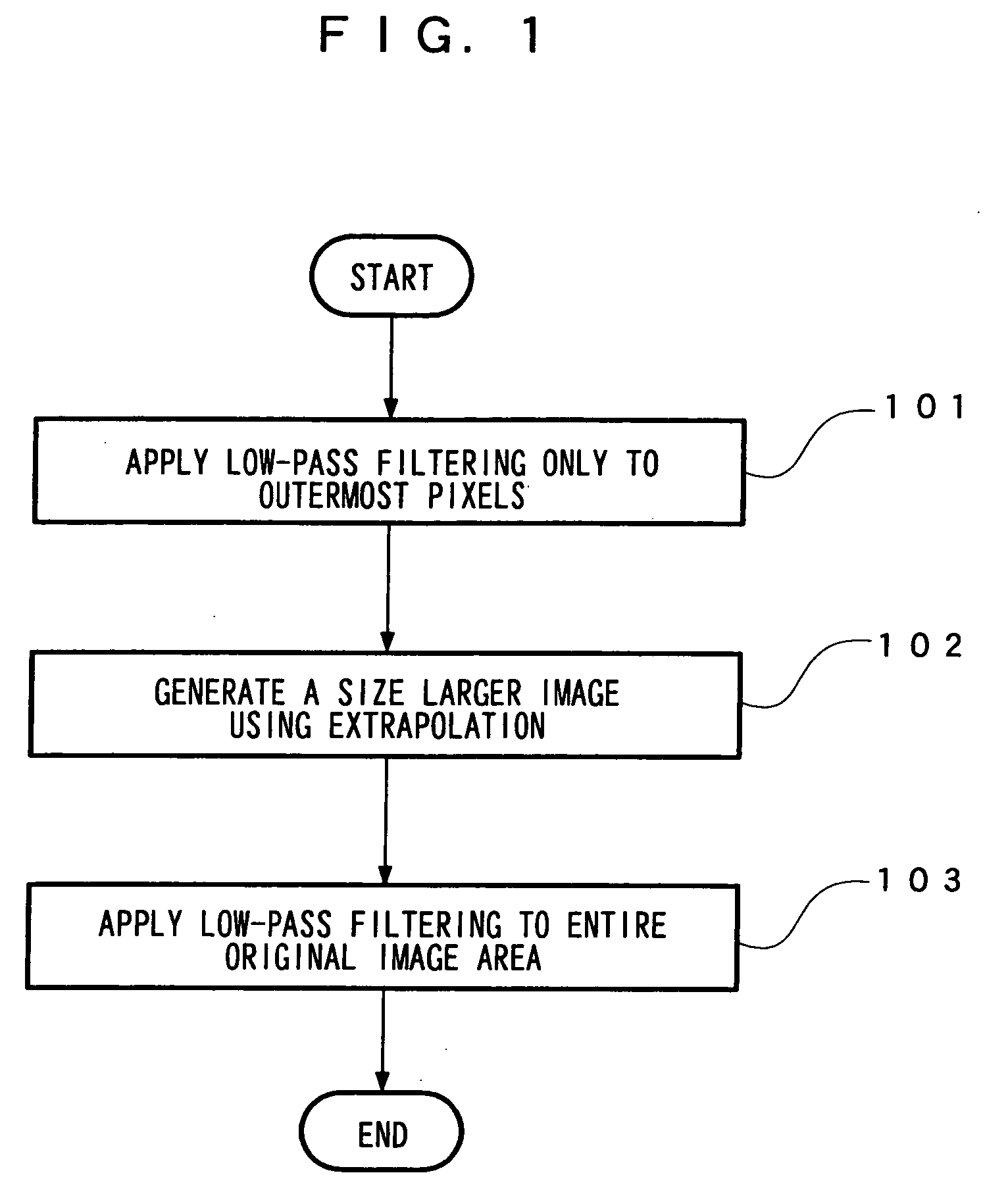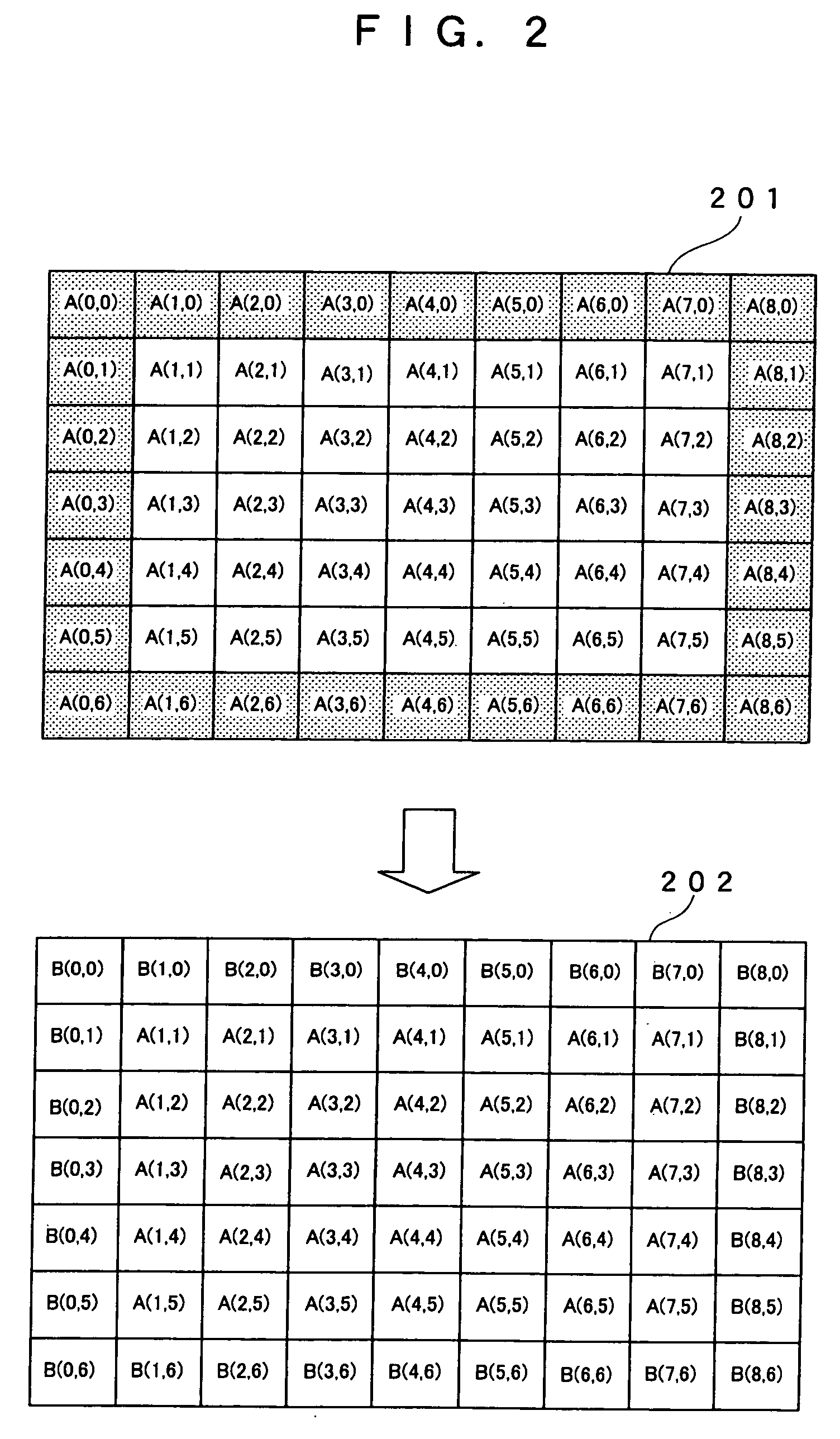Image processing method and image processing apparatus
a processing method and image technology, applied in the field of image processing methods, can solve the problems of not being low-pass-filtered, no conventional image processing techniques provide arrangement for processing in the borders of images, and assigning wrong brightness levels
- Summary
- Abstract
- Description
- Claims
- Application Information
AI Technical Summary
Benefits of technology
Problems solved by technology
Method used
Image
Examples
first embodiment
[0034] FIGS. 1 to 4A and 4B show a first embodiment of the present invention.
[0035]FIG. 1 shows a process flow of an image processing method according to the first embodiment.
[0036] At step 101, low-pass filtering is applied only to the pixels located in the borders of an original image P0 of interest.
[0037] At step 102, extrapolation is performed to generate an image of a size larger than the original image.
[0038] At step 103, low-pass filtering is applied to the entire original image to generate a desired low-pass-filtered image.
[0039] The above-stated procedure will be descried with respect to a more specific example.
[0040]FIG. 2 shows conceptual diagrams showing the pixels in an original image and the pixels resulting from the processing at step 101. In FIG. 2, reference numeral 201 indicates the original monochrome image in which the pixels have brightness values in a 256-level gray scale, ranging from 0 to 255. For simplicity, it is assumed that the image is 9 pixels wid...
second embodiment
[0071]FIG. 5 shows an image processing apparatus performing image processing based on the image processing method described in the first embodiment. FIG. 9 shows a specific processing method performed by a defect detecting apparatus 502.
[0072] The image processing apparatus can be used for inspecting an image capturing device, such as a digital still camera or digital video camera, that uses a lens and a CCD (charge-coupled device). The following is a description of an exemplary application of the image processing apparatus as an inspection apparatus for inspecting lenses and CCDs in a digital still camera to be inspected for defects.
[0073] A camera 500 shown in FIG. 5, which is a digital still camera to be inspected, is used to capture an image of an inspection flat panel 501. The flat panel 501 is a solid-pail-color plate, painted gray for example. An original image P0 is an image of the flat plane 501 captured by the camera 500, and is digital image data. The original image P0 ...
third embodiment
[0090] FIGS. 6 to 8 show a fluorescent microscope image capturing apparatus performing image processing according to the image processing method of the first embodiment.
[0091] In FIG. 6, reference numeral 601 denotes an object to be observed, which is an image to be corrected and may be fluorescently dyed microbe cells, for example. When a laser beam from a laser light source 602 is reflected by a dichroic mirror and applied to the object to be observed 601, the fluorochrome in the object to be observed 601 is energized by the laser light to emit light with a particular wavelength. The light is captured by a CCD camera 604, digitized into image data, and processed in a host computer 605.
[0092] It is difficult to uniformly irradiate the observation surface with laser light emitted to the object to be observed 601. Typically, an illumination distribution is exhibited in which portions closer to the center are brighter than portions closer to the edges. If a fluorescent image energiz...
PUM
 Login to View More
Login to View More Abstract
Description
Claims
Application Information
 Login to View More
Login to View More - R&D
- Intellectual Property
- Life Sciences
- Materials
- Tech Scout
- Unparalleled Data Quality
- Higher Quality Content
- 60% Fewer Hallucinations
Browse by: Latest US Patents, China's latest patents, Technical Efficacy Thesaurus, Application Domain, Technology Topic, Popular Technical Reports.
© 2025 PatSnap. All rights reserved.Legal|Privacy policy|Modern Slavery Act Transparency Statement|Sitemap|About US| Contact US: help@patsnap.com



